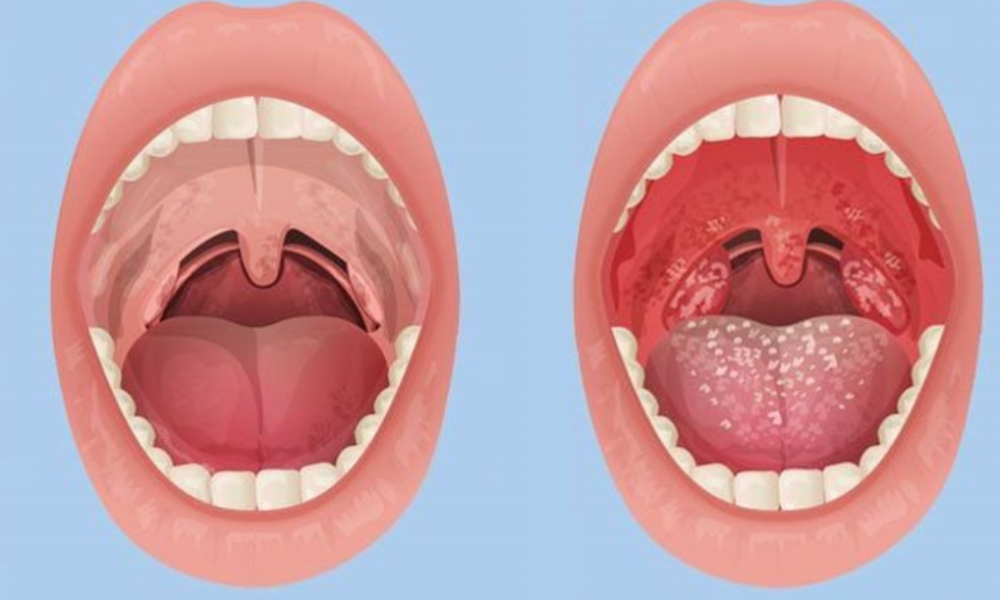Tonsils are the lumps of tissue on both sides of the throat. It sits at the back of the throat. The tonsils are the immune system’s first line of defense against bacteria and viruses that enter the mouth. Tonsillitis is an infection of the tonsils. According to experts, tonsillitis is caused by bacteria or viral…Click Here To Continue Reading>>
Tonsils are the lumps of tissue on both sides of the throat. It sits at the back of the throat. The tonsils are the immune system’s first line of defense against bacteria and viruses that enter the mouth. Tonsillitis is an infection of the tonsils. According to experts, tonsillitis is caused by bacteria or viral infection.
Tonsillitis can be uncomfortable and unpleasant for those having it. In this interview with ‘The Guardian Life’, Dr. Olayide Jinadu, Medical director, Charis-Med Hospital, Lagos expatiates on…Read Full Story…>>>
tonsillitis, causes and treatment.
What are the common causes of tonsillitis in our climate and in what season is it rampant?
Tonsillitis is the inflammation of the tonsils. The tonsils are a pair of lymphoid tissues located at the back of the throat, one on each side of the uvula (soft tissue found hanging from the roof of the mouth when you open your mouth wide).
Lymphoid tissues are an essential part of the human immune system; they usually try to wall off infections from different parts of the body.
Other examples of lymphoid tissues are the adenoids and the appendix. Tonsillitis is commonly caused by viruses and bacteria.
Viral tonsillitis are the commonest and mildest forms of tonsillitis, they are usually self-limiting, meaning they would resolve without the use of medications within seven to 10 days. The bacterial tonsillitis are usually more problematic with the most sever kind caused by Group A beta-hemolytic Streptococcus pyogenes (GABHS).
This disease is an upper respiratory tract infection and would be expected to be more rampant during rainy season. More rainfall is expected worldwide, owing to the increasing global warming, as a result, more respiratory tract infections generally.
Other than medical examination, what are the signs and symptoms that suggest that one may be down with the ailment?
High grade fever present throughout the day, relieved temporarily by anti inflammatory medications. Sore throat, foul breathe, odysphagia (difficulty swallowing) odynophagia (painful swallowing), drooling, poor appetite: Generalised body weakness.
Basically the five cardinal signs of inflammation (pain, redness, heat, swelling and loss of function) would be present at the back of the throat.
Is there any connection between bad breath and chronic/recurrent tonsillitis?
Oh yes! However not everyone with bad breath has tonsillitis. The word ‘Chronic’ means occurring for a while (well over two weeks), while recurrent tonsillitis is one that keeps happening over and over again over a period of time. They both have bad breath (also known as halitosis) as a common feature.
There are other causes of bad breath, like tooth decay, poor oral hygiene, food, tobacco products and dry mouth. Tonsillitis is either caused by viruses such as herpes simplex, Epstein-Barr virus (EBV), adenovirus, measles virus or bacteria….Click Here To Continue Reading>>
Most cases of bacterial tonsillitis are caused by group A beta-hemolytic Streptococcus pyogenes (GABHS), Mycoplasma pneumoniae, Corynebacterium diphtheriae, and Chlamydia.
Are children at greater risk of contracting tonsillitis, and how contagious is it?
Yes! Children are at a greater risk of contracting tonsillitis. Tonsillitis, most often, occurs in children; however, the condition hardly occurs in children below the age of two years.
Tonsillitis caused by Streptococcus species often occurs in children within the age range of five to 15 years, while viral tonsillitis is more popular in younger children. It is very contagious, owing to the fact that it is airborne and transmitted by touching surfaces contaminated with aerosol droplets.
This puts children at risk of contracting the illness as they are incapable of exhibiting discretion when playing at school or interacting with other children.
What happens if left untreated?
Viral infections are usually self-limiting, however the bacterial types must be treated or would lead to sepsis (infection of the blood) which could lead to a myriad of complications, namely respiratory distress, acute kidney injury, cardiac problems, amputation of one or more limbs and even death just to mention a few.
What are the treatment options available?
Treatment options depend on the severity and recurrence of the infection. Viral tonsillitis are usually self-limiting and might not require specific medications, however bacterial tonsillitis would require antibiotics and anti inflammatories.
Surgical treatments (Tonsillectomies), may be considered if the recurrence rate is high (a minimum of five episodes) before the age of five.
Surgeries are also usually considered when some complications arise such as noisy breathing, difficulty in breathing and sleep apnea (breathlessness from sleep). Some basic home remedies are adequate rest, drinking a lot of water, gaggling salt water. However, visit your doctor if symptoms persist.
Is there a specific age group that is more susceptible to tonsillitis attack?
Yes! Children under the age of five are more susceptible owing to their lower immunity. What measures should parents take to prevent growing children from getting tonsillitis?
Invest more on food and fruits that build their immunity. Fruits like the citruses (oranges, tangerines and grapes) apples, pineapples with lots of vegetables. Balanced diet, keep them well hydrated, give them multivitamins to further boost their immunity.
Protect them from having contact with other people already exhibiting symptoms of tonsillitis. Teach them not to share straws, kitchen utensils and drinking water bottles.
…Click Here To Continue Reading>>







